Over the past year, we've seen a shift in the way brands promote their products or services on social media.
And, as social media popularity continues to grow — we reached over 3.6 billion social media users globally in 2020 — brands aren't just wondering how they'll engage huge social media audiences next year. They're also asking, "What social media trends should I expect in this constantly changing landscape?"
To learn more about what brands can expect in 2021 and beyond, I spoke with HubSpot's Social Media Manager Kelly Hendrickson and dug through research, including HubSpot and Talkwalker's Social Media Trends Report.
Below, I've compiled nine expert or research-backed trends social media marketers should watch and leverage in 2021.
1. Brands will continue to take a "less is more" posting approach.
This year, many brands spent less time churning out social media posts and more time producing only content that felt thoughtful, valuable, and in-touch with the world around them.
According to Hendrickson, the trend of "less is more" is likely to continue in 2021.
"COVID-19 had brands starting to ask a question they may have never asked themselves before: 'Does my audience even want to hear from me right now?'," Hendrickson says.
"I expect we'll see brands being more thoughtful about when they post. This may even mean posting less — regardless of algorithms — because it's the right thing to do," Hendrickson explains. "There will also be more thoughtful ad buys and partnerships."
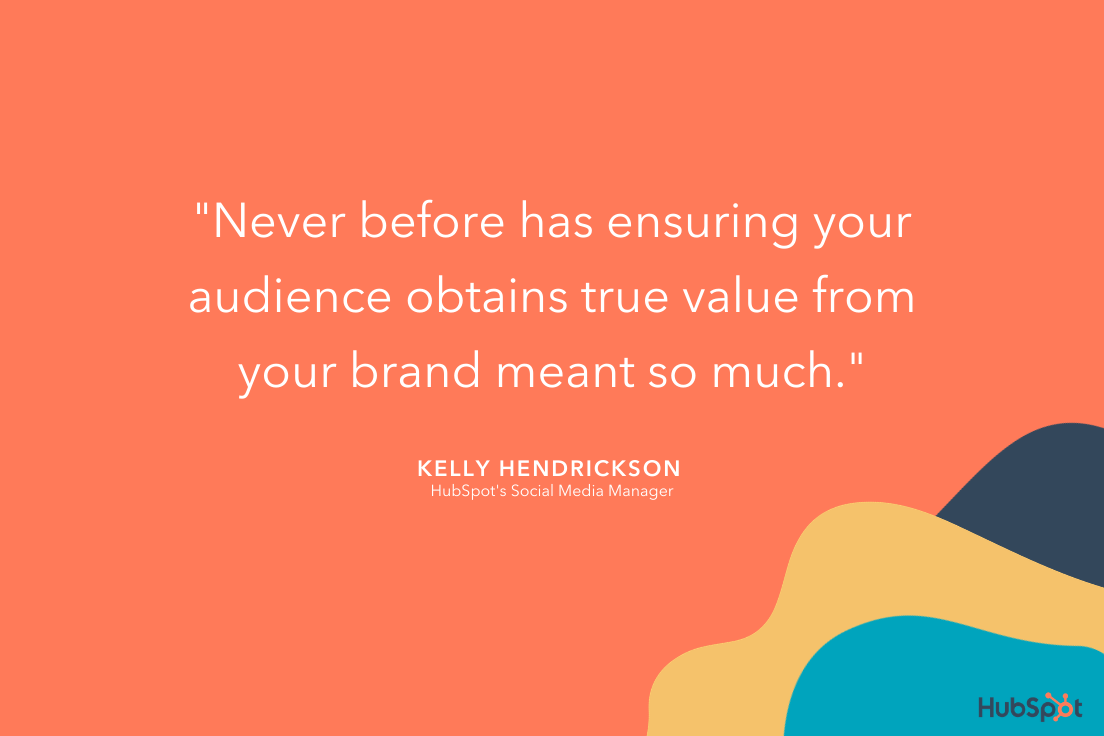
For instance, take a look at Mented Cosmetics' YouTube page. The brand ensures it's thoughtful about when it posts new videos, and typically posts a new video only once per week.
This helps ensure Mented Cosmetics' followers don't feel bombarded with content too often, and keeps the sense of excitement when a new video is posted.
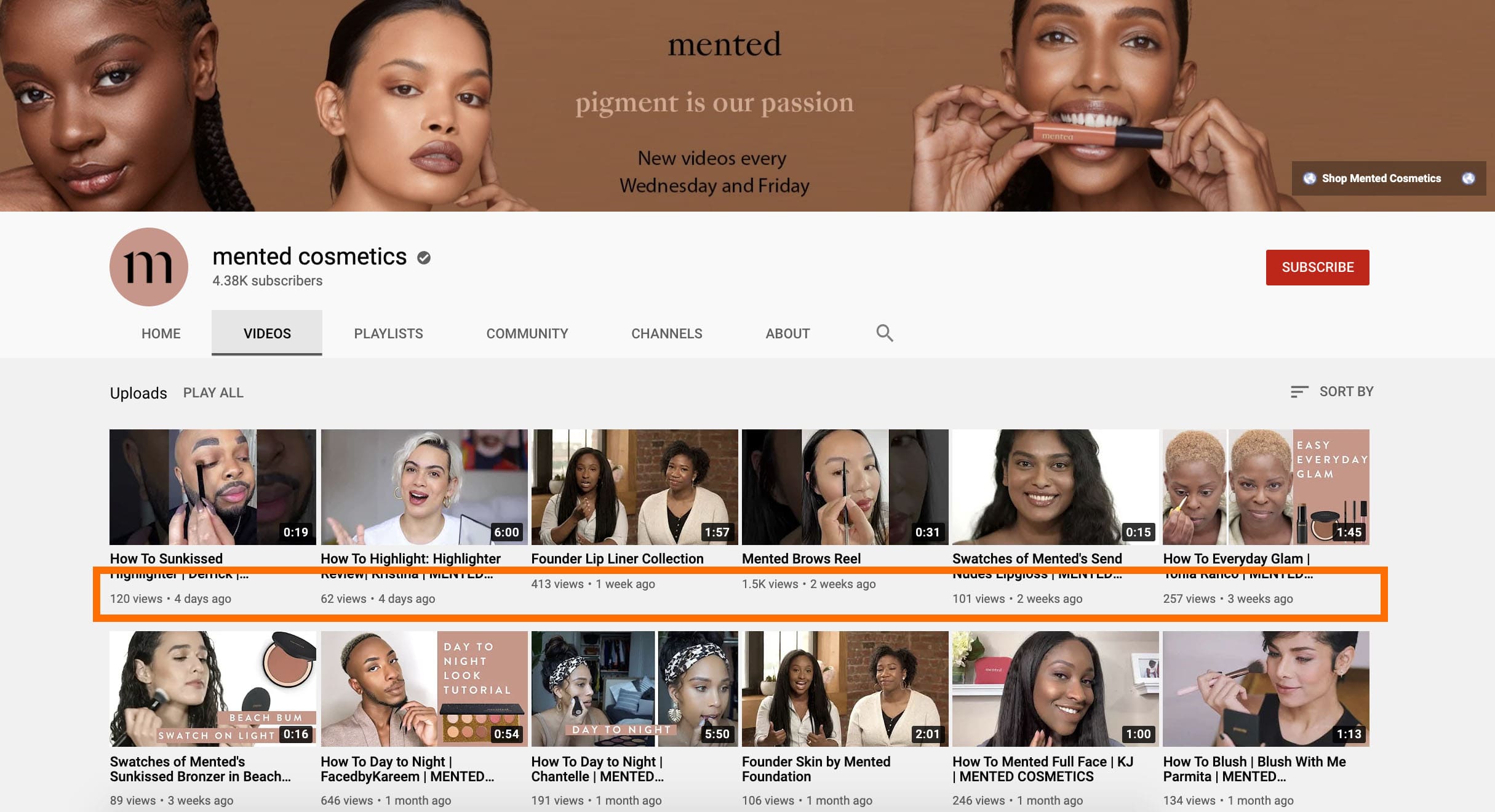
2. Content value will beat production quality.
When many businesses were forced to go completely remote in 2020, social media and video marketing teams needed develop scalable production processes that could be done from home.
When consumers still continued to engage with videos, live streams, and other social media content that was clearly made from home offices, marketers realized that content with lower production quality can still be engaging — if it provides value.
"COVID19 forced many brands to get scrappy when it came to producing content, especially video work," Hendrickson explains. "Without a production studio or tons of equipment available, production value became a bit more lo-fi and in the end, but also a bit more human."
"The exciting thing for brands is that — generally — audiences loved it. If anything, they saw themselves more in the work," Hendrickson adds. "They too were on Zoom, filming things with their phones, or stuck in their homes."
Hendricks predicts that "we'll see bare bones productions in 2021. But, audiences will continue to appreciate it."
For instance, Airbnb's YouTube advertisement, "Meet Dan", is lower production quality — and for good reason. The more authentic behind-the-scenes feel adds to the humor it evokes, as we get a tour of Dan's Airbnb space, complete with alpacas and segways. The brand made a wise decision in forsaking fancier video effects in favor of something much more real — more human.
3. Conversational marketing will change its tone.
Conversational marketing isn't new. In fact, most of the big brands we know and love allow you to connect with them via social media messaging channels at any time.
But, in 2021, with more messaging channels than ever — and consumers needing more information to make a worthy investment — the tone of digital conversations might change.
For example, while past conversational marketing tactics centered around promotions and making sales as quickly as possible, 2021's conversational marketers might be more focused on helping a user with something, educating them about a product, and nurturing them to conversion with a more thoughtful or empathic tone.
"Brands need to be more human on social media, inviting the world to your dinner table for a meaningful and engaging conversation," says Aaron Kaufman, Director of Social Media at Square Enix in our Social Media Trends Report.
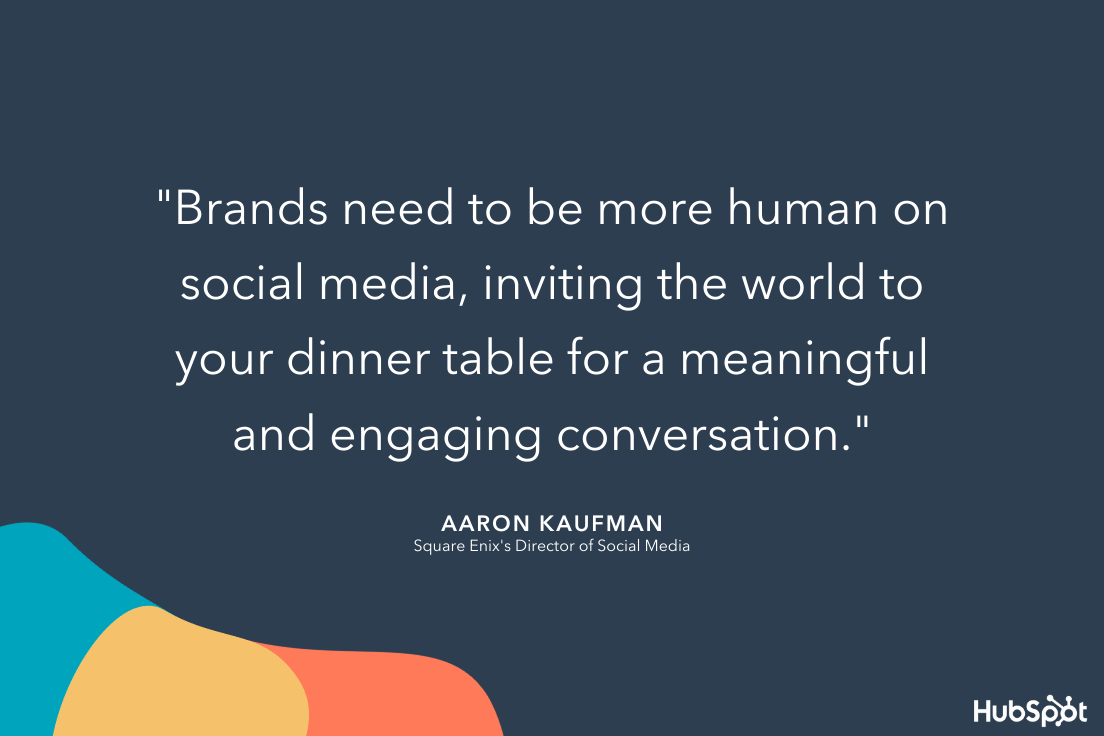
"You are your fan's greatest fans and need to embody that no matter what social media channel you live on. Emote, respond, recognize, relate, be engaging. We're not robots."
For example, Asana recently posted a #TakeYourKidsToWorkDay inspired post on LinkedIn, along with a sweet message: "Sending much [love] to our parents & caregivers community!" The message has nothing to do with Asana's products or services — instead, it focuses on making a connection with Asana's audience on a deeper level.
 So, how will brands deal with more demand for thoughtful conversational marketing? A mix of AI tools and human interaction could help.
So, how will brands deal with more demand for thoughtful conversational marketing? A mix of AI tools and human interaction could help.
A healthy combination of AI and human interaction could enable brands to run efficiently on social media while still giving consumers the authenticity they need to see to trust a brand and make a purchase. For example, a bot could handle quick message queries, while sales, service, or community management reps could respond to more complex questions and concerns.
To learn more about scaling up your conversational marketing strategy, check out this guide to building a chatbot or learn how HubSpot increased qualified leads with by mixing human and bots in our conversational marketing.
4. Consumers will crave snackable content.
In 2020, we saw the rise of TikTok and Instagram Reels, continued engagement on Stories content from Facebook, Instagram, and Snapchat, and brands creating other short-form or "snackable" pieces content to educate consumers about their brand.
As social media attention spans continue to shrink and more people scroll endlessly through feeds while bored at home, don't expect snackable content to lose steam anytime soon.
Take a look at McBride Sisters Collection's recent tweet, showcasing a design that quickly summarizes which wine glass shapes you should use for various wine types — including white, dessert, and sparkling.
The image is easily digestible (or snackable), so the brand's followers can quickly get value from the post without spending too much time looking at it.
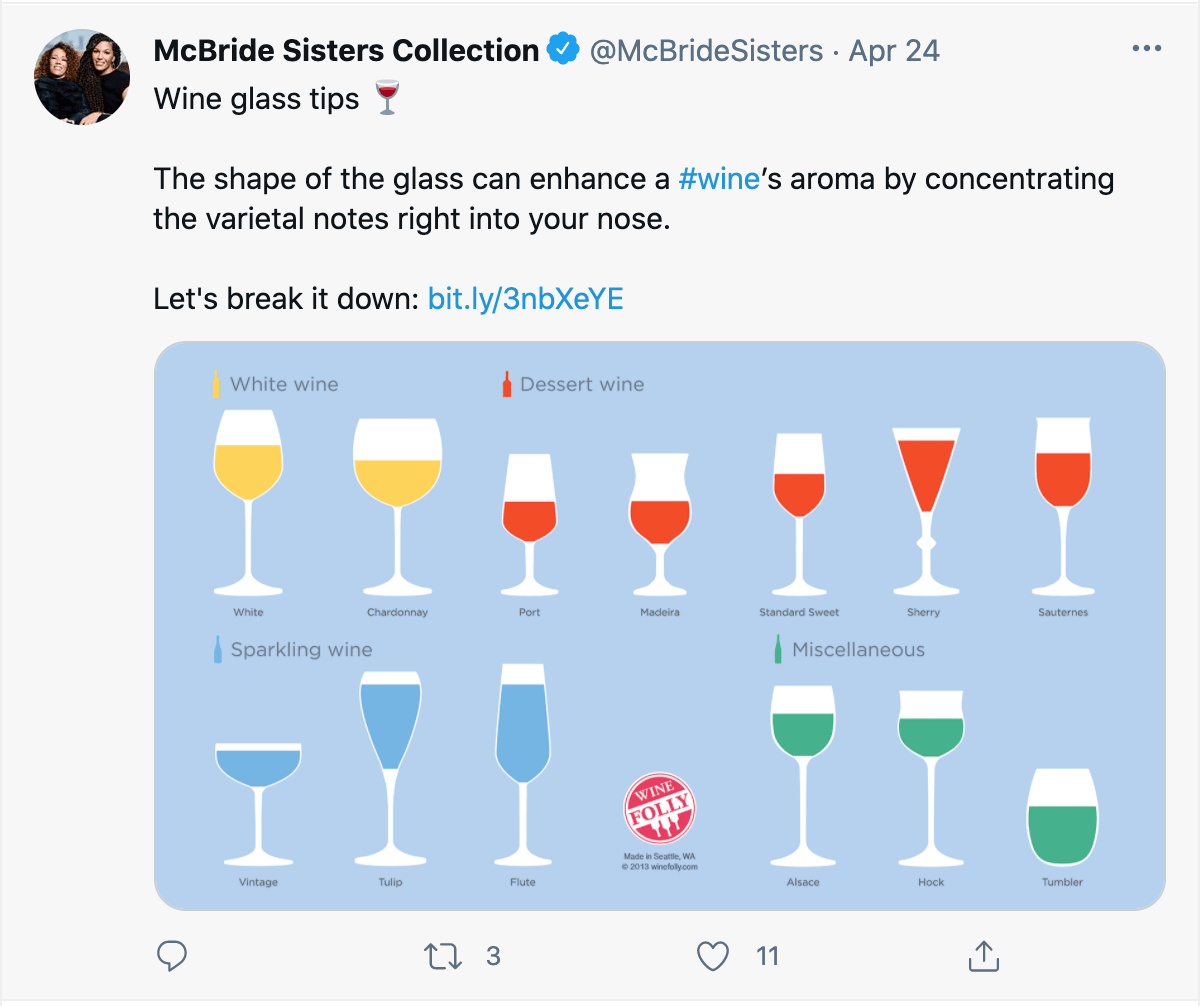
To learn more about four types of snackable content your brand should leverage next year, check out this helpful post.
5. Video will continue to take center stage.
Early in 2020, HubSpot's Not Another State of Marketing Report found that video was the most commonly used marketing content — and the second most engaging content type on social media.
As major platforms, like Facebook, Instagram, TikTok, Twitter, and LinkedIn increasingly amp up their video capabilities, marketers can expect high video consumption to continue and grow in coming years.
6. More brands will go live.
In 2019, one in five Facebook videos were live. In May of that year, YouTube users cumulatively spent 284 hours watching live video.
In 2020, as many brands were forced to take conferences, events, and other marketing experiences online, it's not shocking to think that 2020 live stream numbers could be higher.
At the moment, many brands are using Facebook, Instagram, Twitch, and Twitter to live stream events, Q&As, tutorials and other types of content. These types of content keep your followers engaged with your brand by bringing an event they otherwise might not be able to attend directly to their screens.
For example, each year, INBOUND interviews some of its noteworthy speakers and guests in live INBOUND Studio episodes on Facebook. This allows followers who can't join us to get live tips from experts. It also allows followers of interviewed experts to learn more about INBOUND and HubSpot.
To learn more about going live online, check out this guide to live streaming, as well as these tips for marketing your next virtual event.
7. Social media platforms could double as shopping channels.
As many brands learned how to do business completely online, platforms like Facebook, Instagram, Twitter, Snapchat, and TikTok raced to develop more online business marketing solutions.
While TikTok and Snapchat expanded business marketing offerings in 2020, Facebook and Instagram actually brought shopping capabilities directly to their apps.
With Facebook Shops, Instagram Shoppable posts, consumers can buy a product seen in a post without even leaving the app they're on.
For instance, take a look at Pink Lily Boutique's shoppable Instagram post. When you click on the image, you'll see a few tags of each product the model is wearing — you can then click on the link to purchase immediately, all without leaving the app.
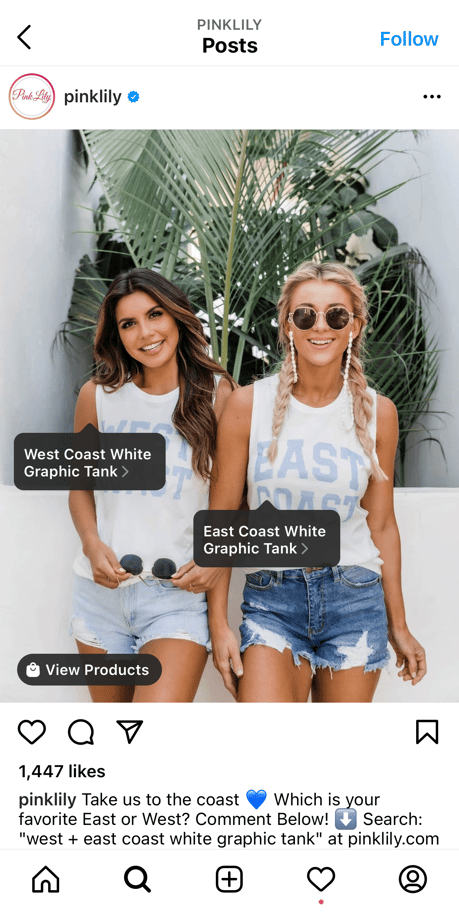 For consumers, this adds convenience. For brands that couldn't build their own ecommerce store, the online shopping tools noted above are providing new opportunities to effectively sell products online.
For consumers, this adds convenience. For brands that couldn't build their own ecommerce store, the online shopping tools noted above are providing new opportunities to effectively sell products online.
8. Social media users will embrace gaming and VR.
In the last year, the number of social media users who identify as "gamers" increased by more than 10 million — or 32%. Our Social Media Trends Report reveals that the highest uptick in gamer identification happened in COVID-19's heaviest lockdown months.
Now, with Facebook's company, Oculus, launching new VR products, Twitch continuing to expand online game-streaming capabilities, and platforms like Snapchat launching mini-game apps, it's clear that gamification and social media will continue to go hand in hand in 2021.
As a small to medium-business marketer, gaming-related promotions might be inaccessible now, but with Facebook and other major platforms continuing to launch brand tools around their newest features — it's not shocking to think that more social media in-game advertising opportunities could be possible in the future.
Brands should keep an eye out for game-related promotions in 2021.
Wendy's took advantage of the gaming world via Twitch in 2019 when the brand created an avatar for the popular game Fortnite to destroy freezers and showcase the brand's commitment to fresh meat.
The marketing promotion earned 1.5 million minutes watched, and garnered an 119% increase in Wendy's brand mentions across all platforms.
Even if advertorial game content becomes available to big brands but not smaller companies, marketers can still watch what bigger companies are doing and hit the ground running with fresh ideas if gamified promotion become more scalable.
9. Authenticity will be vital.
This year, consumers and brands faced a global pandemic, uncertain financial times, and a number of major events that paused nations in front of news channels.
Now, consumers need more than just great deals to trust, identify with, and invest in a brand. At this point, many brands have taken notice by embracing authenticity and their human side on social media.
For instance, Tipping Cow Ice Cream chose to forgo an ice cream post on New Years Eve to focus on something more important: The founders' appreciation for their customers' support, particularly during the challenging year of 2020. The post demonstrates authenticity and a sense of realness you can't earn with only product-focused posts.
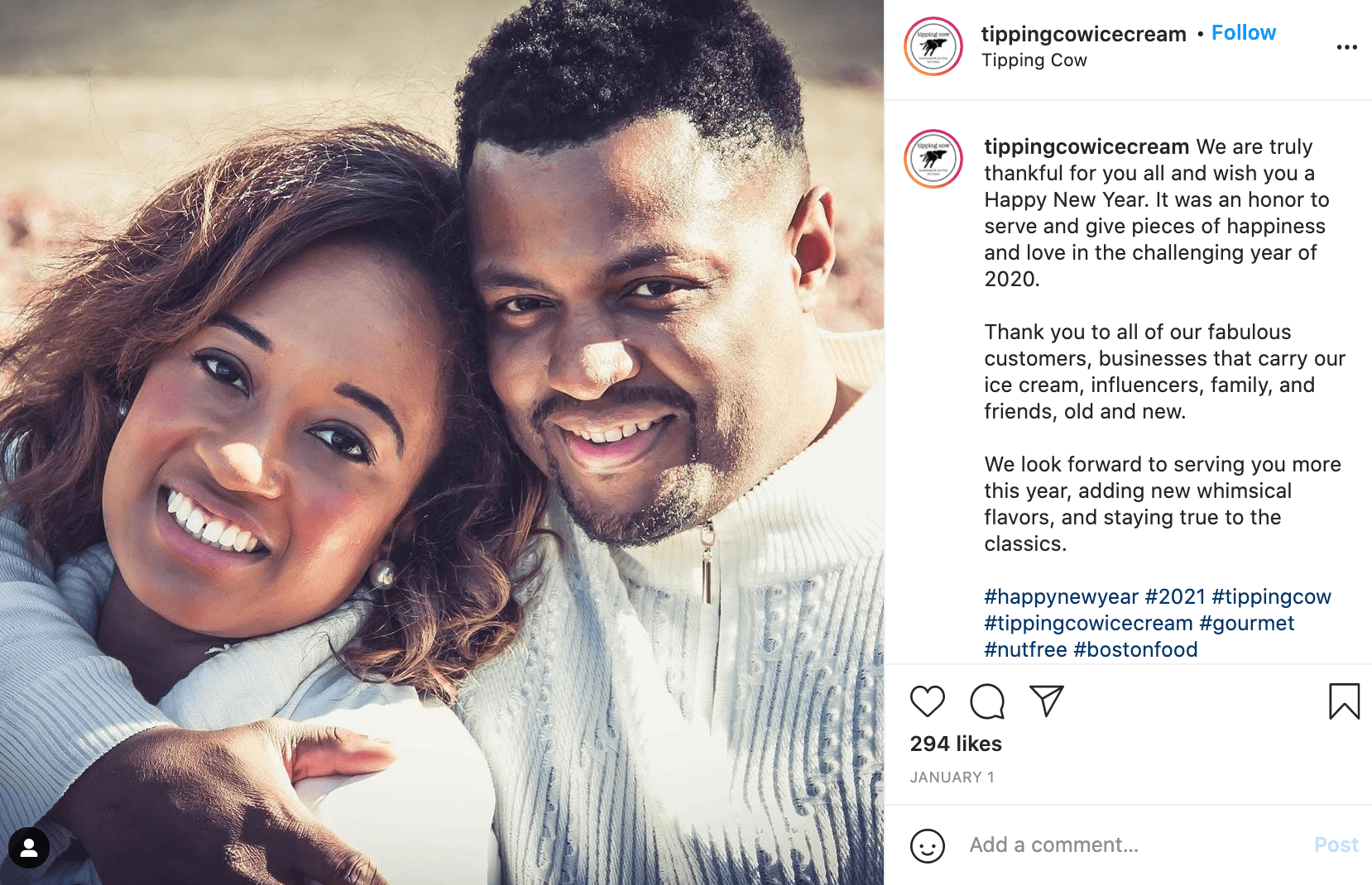 While some brands have spoken directly about their thoughts related to COVID-19 or other news items, others have shown authenticity by zoning on their customers through user-generated content or customer testimonials.
While some brands have spoken directly about their thoughts related to COVID-19 or other news items, others have shown authenticity by zoning on their customers through user-generated content or customer testimonials.
When done authentically, both strategies can help brands gain trust from their audiences while boosting awareness as a company that cares about people.
"We will continue to see the growth in creators in the social media space. Influencers will continue to be present, but accountability, authenticity, and transparency will be the areas brands and companies will use to determine who to partner with, and who to pass on," says Karen Freberg in our Social Media Trends Report.
"Empathy and advocacy will be elements that will be integrated within messages and purposes for creator campaigns. The days of 'faking it till you make it' without any experience other than having lots of followers are over."
In 2021, expect authenticity to take center stage on social media as successful brands continue to build trust from their audiences.
How to Capitalize on 2021 Social Media Marketing Trends
Now that we've covered some of the most popular social media trends you'll see in 2021, let's recap steps you can take to leverage these trends to boost your own social activity.
Here are a few steps your social team can take to leverage these trends, attract new audiences, and build a larger following:
- Leverage video whenever possible. People love video right now, especially live video content, which feels especially authentic. Test out live video channels like IGTV or Facebook Live to see how they perform.
- Create relatable content. Don't be afraid to show a different side to your brand. Highlight customer stories; talk about your company's larger mission or purpose; give us a 'day in the life' of one of your employees. Go beyond your product or service to create a deeper connection with your audience.
- Use a conversational tone. Create social media captions like you're speaking to a friend. Of course, you'll want to stick to your brand's voice, but play around with how you might converse with your audience through social channels. Consider asking your followers questions or telling stories to increase engagement levels.
- Use design elements for snackable content. Test out memes, gifs, short videos, quick quizzes, fun infographics, etc. to figure out how you might attract, and hold, an audience's attention even when they're scrolling quickly through their feeds.
- Quality over quantity. No need to post once a day. Audiences appreciate quality over quantity — consider how you might set up a schedule so you're regularly posting content but not overposting. Use analytics to determine the right cadence for your own brand.
Navigating Social Media in 2021
Today, the world around us is constantly changing. And, although we think we know what to expect with social media, this list of trends is likely not exhaustive of what we'll see in 2021.
As a social media marketer, the best thing you can do is to continue to research trends, online consumer behaviors, and your team's social media data to determine which trends or strategies to lean into or how to navigate unprecedented online scenarios.
One great place to start doing this research could be our HubSpot and Talkwalker's recent Social Media Trends Report.
Along with insights and quotes from social media experts, our Social Media Trends Report walks through all the major 2021 trend predictions to know about and data on how COVID-19 could impact social media marketing. To see the free report, click here or the banner below.
from Marketing https://ift.tt/2SJPOkd
via
![Download Now: Social Media Trends in 2021 [Free Report]](https://no-cache.hubspot.com/cta/default/53/3dc1dfd9-2cb4-4498-8c57-19dbb5671820.png)
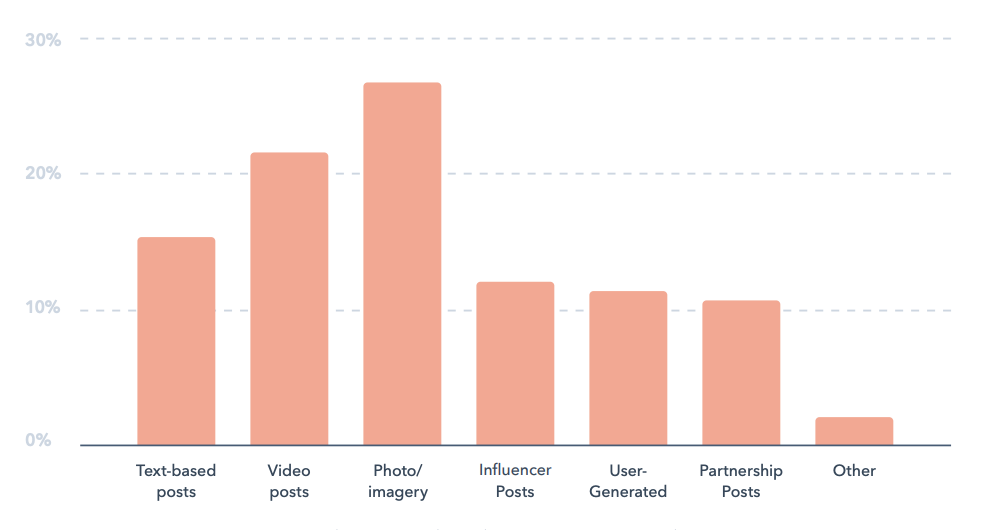

No comments:
Post a Comment